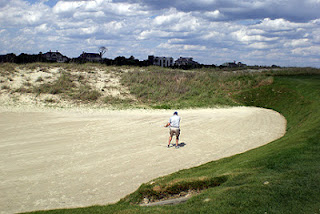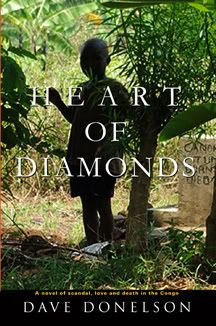Shrimp ‘n Grits. Even if you don’t want to play one of the most exciting golf courses in the country, bask on a top-ten beach, or luxuriate in a five-star spa, it’s worth the trip to Kiawah Island just to chow down on Shrimp ‘n Grits, a dish you’ll fortunately find on many menus at the resort. I liked it so much I had it for breakfast one day.
The dish is a lot like the entire experience at Kiawah, the oceanfront resort just 21 miles from Charleston, South Carolina. Each mouthful seems to combine the briny breeze off the Atlantic with the nutty grist of the dunes, all smothered with the creamy gravy of Southern hospitality. The resort melds into a 10,000-acre barrier island, home to egrets, loggerhead turtles, and alligators, not to mention ten miles of perfect Atlantic Ocean beach. You can stay at the ultra-luxury 255-room Sanctuary Hotel or rent one of the 600 charming villas and private homes on the island. There are world-class tennis facilities, a nature center with on-staff naturalists, bike rentals, three swimming pool complexes, a 21-acre park, and year-round family activities.

But the prime attraction at Kiawah Island—or at least the reason we went—are the five championship golf courses headlined by Pete Dye’s Ocean Course, once named America’s Toughest Course by Golf Digest, home of the 1991 Ryder Cup, and home of the 2012 PGA Championship. Not to be overlooked are the other four courses at the resort, all creations of the world’s top golf course architects. They are Osprey Point by Tom Fazio, Turtle Point by Jack Nicklaus, Cougar Point by Gary Player, and Oak Point by Clyde Johnston.
Golfers with a sense of history remember very well the “War By The Shore,” the 1991 Ryder Cup that poured gasoline on the spark of rivalry ignited by the European win in 1987 and the jaw-clenching tie of 1989. When the matches came to Kiawah, they took on a death-before-dishonor tone that they’d never really seen before. Corey Pavin and Steve Pate wore combat-style camo hats in their second day match, the fans were beered-up and raucous, the course was windswept and fast, giving the golfers on both sides fits as they tried to navigate the tough layout and hit the tiny target greens. As the final day dawned, the teams were tied. The singles matches went back and forth, with one memorable moment after another including Mark Calcavecchia’s choking finish that culminated in a missed two-foot putt. The Americans won the event on a missed putt, too, this one the last putt of the last hole when Bernhard Langer’s four-footer slid past the cup.
There may not be chants of “USA! USA!” when you play the Ocean Course, but that won’t make it any less thrilling. The 7,296-yard, par 72 layout runs back and forth along the dune line, giving you views of the ocean on practically every hole while forcing you to play the wind differently on each one as well. The course doesn’t play flat like some other tracks in the region, but has many not-so-subtle elevation changes Dye carved into the fairways to add to the fun. Among the stand-out holes is the 543-yard par-five second, a double dog leg that features a cross hazard in the landing area for the second shot, forcing either a heroic effort to carry it or a precise layup to avoid it. It’s followed by the shortest par four on the course, the 390-yard third hole where the green is perched on a natural sand dune that requires a perfect, high, soft approach to hold the green.
The Ocean Course plays progressively harder as you proceed through the round. At the fourteenth hole, the wind is either your best friend or your worst enemy. Your only choice on this 194-yard par three is to hit the green, which is surrounded by a waste area on the left and a steep collection area on the right from which it’s almost impossible to get up and down. The seventeenth hole strikes fear into the heart of every golfer who stands on the tee and tries to muster the strength and courage to carry the water to the green as much as 221 yards away. The average player at the resort loses two balls on this hole—and most play from the forward tee boxes!
Turtle Point, the Jack Nicklaus design that opened in 1981, is almost the opposite style of golf course, although not much less challenging. It’s a low-profile track where fairways and greens blend into the existing landscape without the artificial mounding and radical features that have become so popular elsewhere. At 6,914 yards from the tips and five par fours measuring 420 yards or longer, the course offers a fine test. The 412-yard fifteenth hole, with its tiny green tucked into the dunes, is part of a three-hole oceanfront duo and possibly the hardest hole on the course.
Tom Fazio’s Osprey Point features four large natural lakes, fingers of saltwater marsh, and dense forests of ancient live oaks, palmetto palms, and magnolias. The 6,871-yard, par 72 course has a great mix of golf holes including the 453-yard par-four ninth and two 200-yard-plus par threes, as well as some short par fours that tempt the big hitter to take a trip on the wild side.
Cougar Point, designed by Gary Player, is known for its three-hole stretch through the front nine bordering the tidal marsh and offering panoramic views of the Kiawah River. The countless wading birds, wave-skipping pelicans, and soaring osprey can easily break your concentration on par—in a good way. The 6,861-yard, par 72 course has an excellent finishing stretch that begins with the 542-yard par five fifteenth hole and ends with the dramatic 415-yard eighteenth.
Oak Point lies just outside the Kiawah gate. It’s a more typical parkland course and makes a good break from the on-island courses. It’s not to be taken lightly, either. At 6,701 yards, it’s long enough to keep your attention and tricky enough to put a big number (or two) on your scorecard.
Kiawah Island is one of the country’s prime non-golf vacation destinations, too. Tennis Magazine ranks it among the top tennis resorts in the nation, based on the quality of instruction as well as on the two separate tennis facilities, one with 14 Har-Tru clay courts, two lighted hard courts and a backboard, the other with nine Har-Tru clay courts (one lighted) and three hard courts (one lighted) as well as a zoned practice court with a ball machine and automatic retrieval system. Family activities include swimming, canoeing, kayaking, bicycling, cookouts, oyster roasts, sing-alongs, and nature walks. Staff naturalists conduct marsh creek canoe trips, sea kayaking, birding walks, night beach walks, and bike tours. Guests at Kiawah enjoy a uniquely pristine beach that stretches ten miles along the Atlantic—and 100 yards wide at low tide! Island homes are set back behind the dunes and the Sanctuary Hotel is the only one on the beach, so it’s much like enjoying your own private beach.
After all the fun and games, you’ll need a place to lay your head, of course. You have two options. First is the Sanctuary, an ultra-luxurious oceanfront resort and spa that opened just seven years ago. Ninety percent of the guest rooms—which are among the largest you’ll find anywhere—have ocean views and all of them have five-fixture bathrooms with walk-in showers and deep soaking tubs. The hotel’s spa has a Five-Star Mobil rating and features 12 treatment rooms, sauna, steam room, and whirlpool as well as a beauty salon and fitness center. Indulge yourself—or a treat a special someone—to a Mint Julep facial, Lowcountry Verbena Body Polish, or a Body Wrapture—a treatment with warm grain- and herb-filled wraps used to induce deep relaxation. For an additional housing option, you can rent a private home or condo through the Villas at Kiawah Island.
Now, back to the Shrimp ‘n Grits. Kiawah offers an array of dining options—all of which offer more than just my favorite dish. The Ocean Room at the Sanctuary is the resort’s premier restaurant. It specializes in serving local, grass-fed beef, helping to earn it both the Forbes Five-Star and the AAA Five-Diamond awards. Jasmine Porch, the more casual restaurant at the hotel, serves up Lowcountry cuisine in a setting of authentic Charleston brick, oak-planked floors, and a breath-taking view of the Atlantic ocean. Yes, this is the prime destination for Shrimp ‘n Grits, but you can also enjoy She Crab Bisque, house-made charcuterie, and other local specialties. There are also several casual eating spots on and around the property and each of the golf courses offers dining options as well, although some don’t offer dinner. The Atlantic Room at the Ocean Course concentrates on fine local seafood while Tomasso at Turtle Point is an Italian eatery
Among many other books, Dave Donelson is the author of
Weird Golf: 18 tales of fantastic, horrific, scientifically impossible, and morally reprehensible golf




















